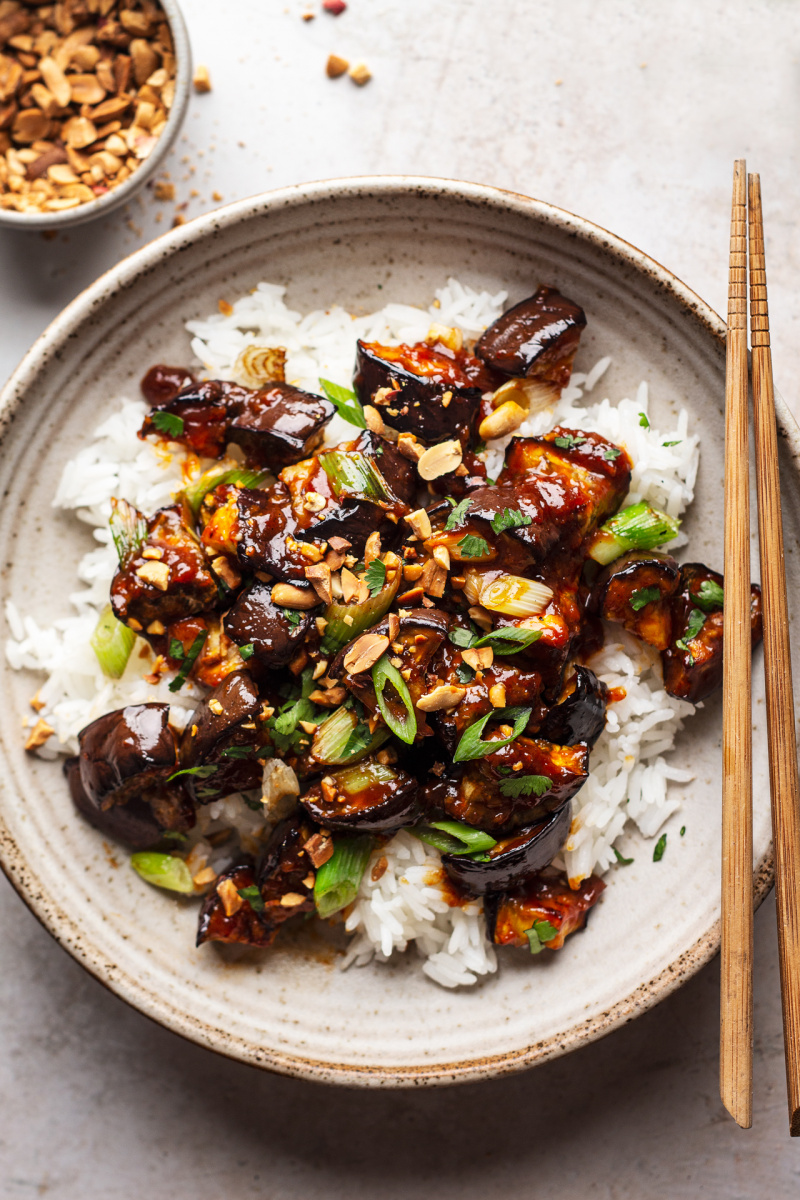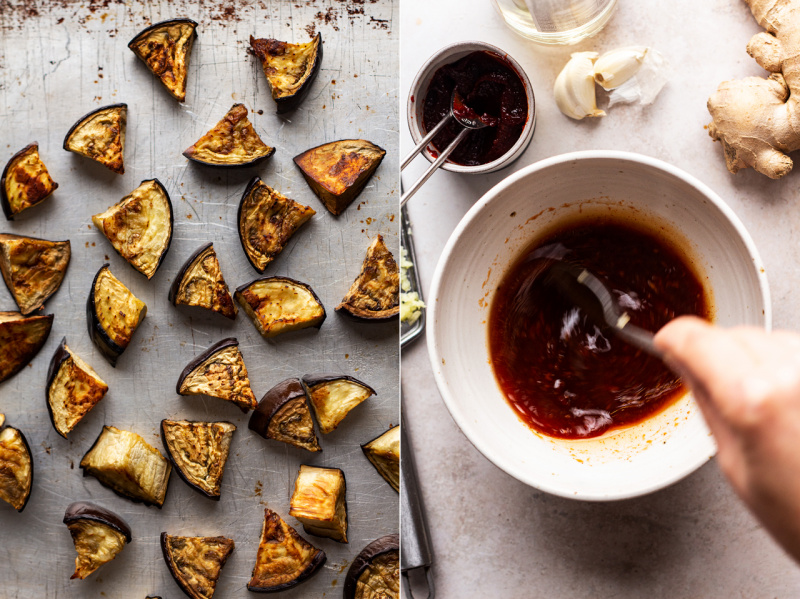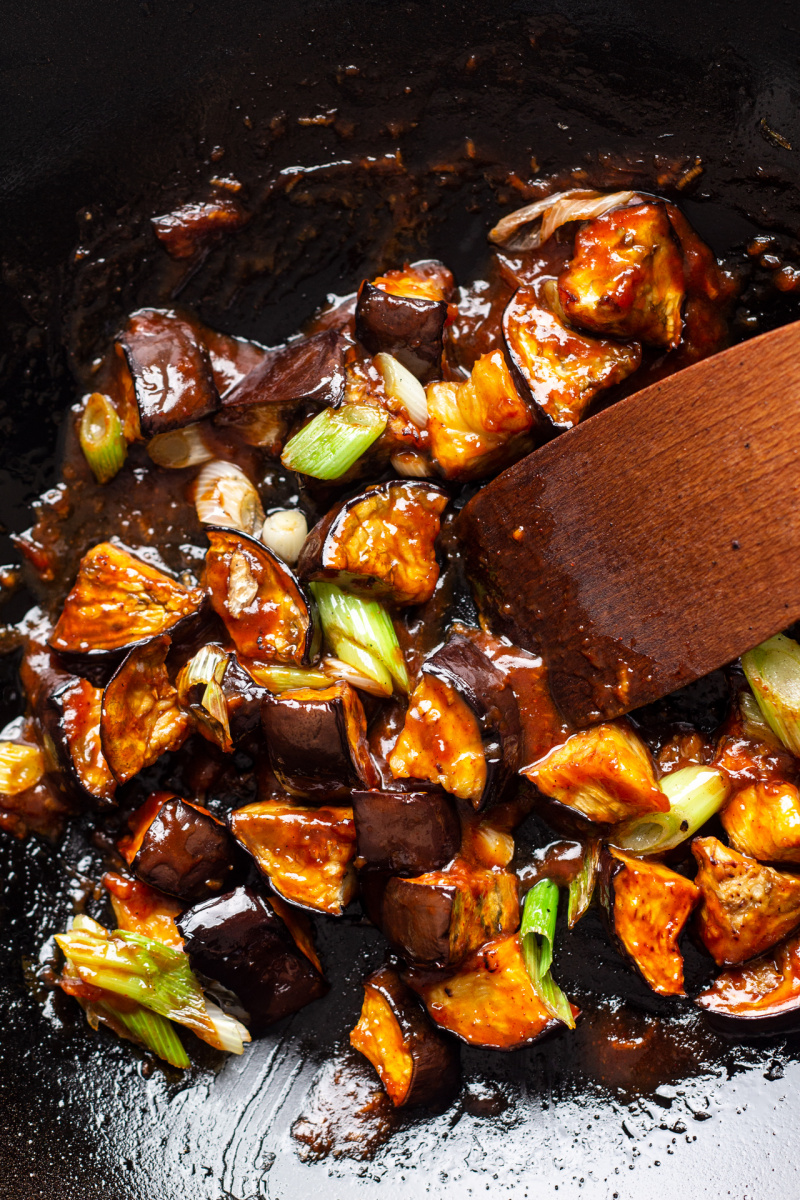Even though autumn is clearly very much in the air, I am still a little nostalgic about summer. It’s perhaps because I feel that there wasn’t enough of it this year and what there was was tainted by the realities of a global pandemic – and so I am not ready to say goodbye to late summer produce just yet. Especially eggplants, which I have been buying a lot of lately. I have at least 2, maybe 3, shareable eggplant recipes in my head if you are a fellow fan.
Today’s recipe is a quick, midweek number that uses few ingredients and is pretty effortless in terms of prep, yet it delivers a satisfying and packed-with-flavour meal. This dish is a love child of two of my other dishes, this one and this one. My focus here was to create a dish that is easy to make, delivers a lot of flavour and does not use a lot of oil as I am on a bit of a post-lockdown health kick. Even when not on a health kick, I’m generally quite oil-averse although I’m not ready to ditch it completely. I realise that there is little nutritional benefit to oil (you are better off consuming the actual ingredient that it is derived from), but it does help in the flavour department immensely and I feel that’s not a trivial matter. In this case, however, I really don’t feel that there is that much difference and as eggplant is notorious for being an oil-thirsty vegetable, I’ve decided to prepare it in the same way I treat it when making my famous moussaka. I slice it and stick it into a hot oven and let the high temperature soften its flesh. Once soft, it takes well to being coated in an aromatic, spicy sauce and while the fried version is a touch more indulgent, I think this is a good option if you are trying to eat healthier.
2 tsp cornstarch / cornflour 2 tbsp soy sauce or tamari (for GF version) 4 tsp rice wine vinegar 1 tbsp maple syrup or sugar 1 tsp finely grated ginger 1 small garlic clove, finely grated 2 tsp toasted sesame oil 2-3 tsp Gochujang (Korean chilli paste)*, adjust to taste




